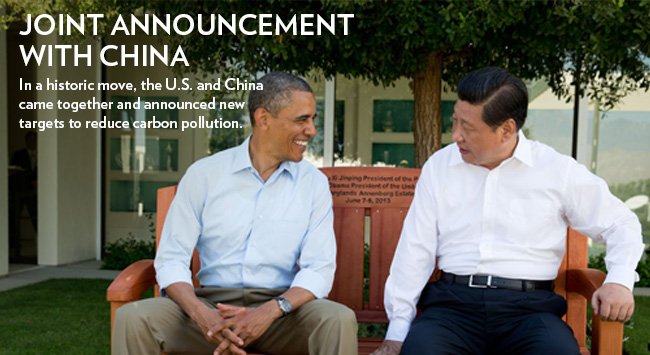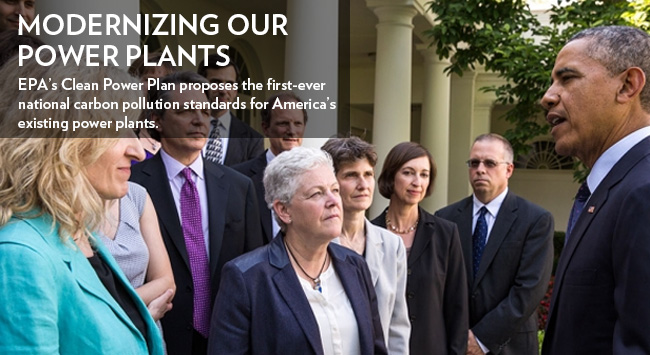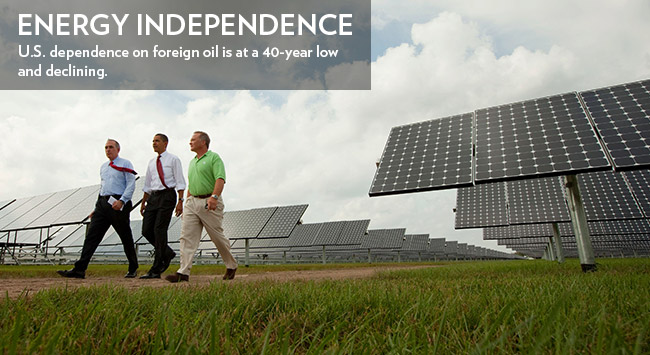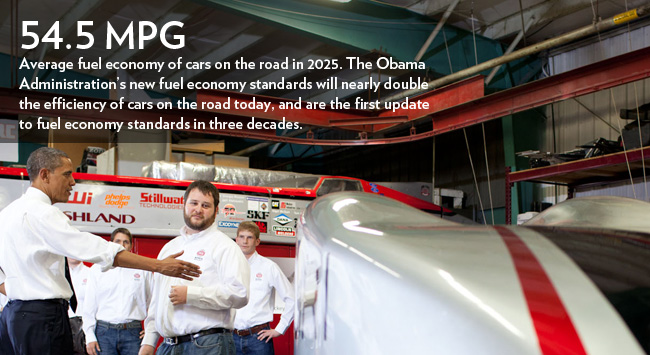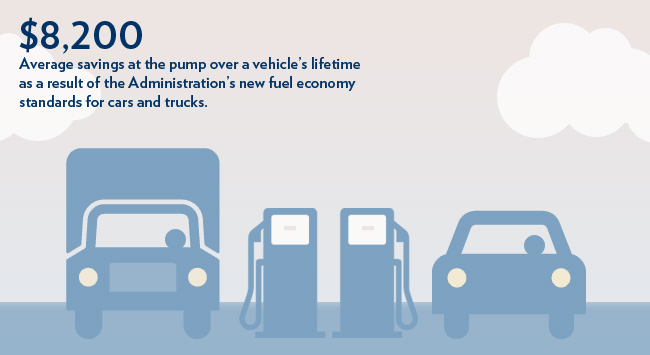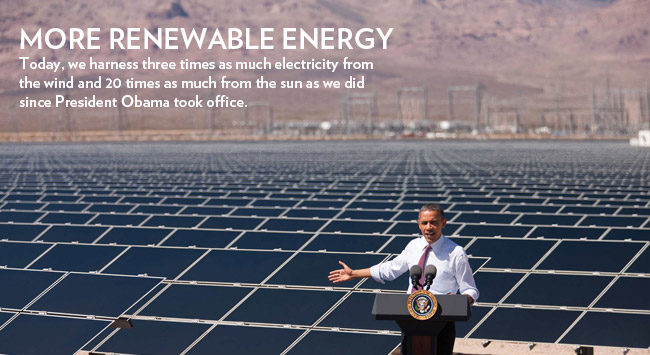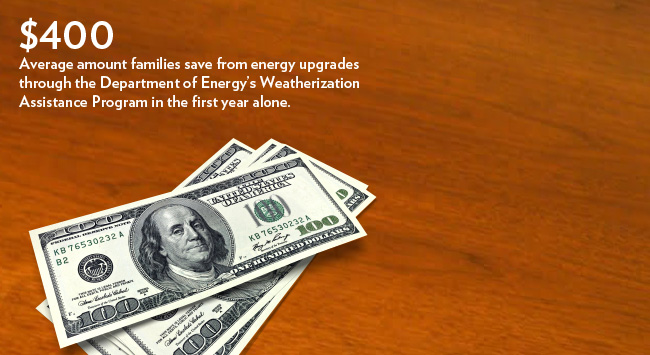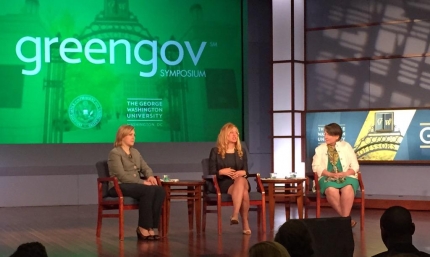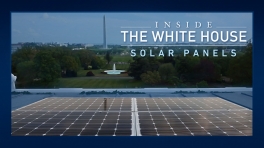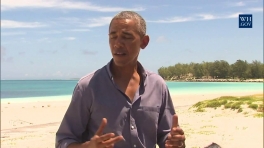Energy and Environment Latest News
PHOTOS AND FACTS: What You Can Learn from the White House Honeybees
Posted by on June 16, 2015 at 4:47 PM EDTIt's National Pollinator Week! What does that mean and why should you care?
Check this out:
 Learn more about Energy and Environment
Learn more about Energy and EnvironmentChart of the Week: We’re Using More Clean Energy than Ever Before
Posted by on June 16, 2015 at 10:30 AM EDTRising temperatures, extreme weather, public health threats -- there’s no question that climate change is one of the greatest threats to our security, our planet, and our future. So what can we do about it?
Here’s one decisive step to take: Power up with clean energy.
Investing in renewable energy sources like wind and solar gives us two advantages: It reduces our carbon footprint and, as a burgeoning global industry, will spark our economic growth. Consider this: According to industry analyses, employment in the solar industry has grown more than 85 percent since 2010, while the price of a rooftop solar system has dropped more than 50 percent.
When President Obama took office, he made it point to take the first concrete steps down this path. And that’s why, today, we produce more wind and solar energy than ever, while our economy is creating jobs at the fastest pace since 1998.
What’s that look like?
Take a look at this chart to see how we’ve tripled our wind power and generated 20 times more solar electricity than when the President took office in 2009:
 Learn more about Energy and Environment
Learn more about Energy and EnvironmentMobilizing $4 Billion in Private-Sector Support for Homegrown Clean Energy Innovation
Posted by on June 16, 2015 at 7:19 AM EDTIngenuity is one of our country’s greatest assets. America’s entrepreneurs and innovators have a legacy of unleashing their creativity, grit, and imagination to invent, discover, and build solutions that not only contribute to our growing economy, but also solve some of the toughest challenges facing the nation. Investing in homegrown innovation, including the development of new, clean-energy technologies, is a crucial part of the fight against climate change – and is key to keeping America on the leading edge of the world’s transition to a low-carbon economy.
Learn more about Energy and EnvironmentFederal Sustainability: Leading by Example and Driving Innovation
Posted by on June 12, 2015 at 5:37 PM EDTThis week, CEQ Managing Director Christy Goldfuss and I kicked off the 2015 GreenGov Symposium – an event co-hosted by CEQ and The George Washington University – where we highlighted Federal sustainability achievements and discussed strategies to continue meeting sustainability goals. EPA Administrator Gina McCarthy and Navy Secretary Ray Mabus joined us to emphasize the all-hands-on-deck approach that Federal agencies must take to address climate change. We were also joined by GW faculty and staff as well as expert panelists from Federal agencies, private companies, and nonprofit organizations. The participants shared best practices for a variety of sustainability fields, including clean energy, vehicle fleet management, and energy efficiency.
And there was good news to share. This week, agencies released their 2014 Agency Sustainability Scorecards. The scorecards show that Federal agencies have reduced greenhouse gas emissions by 17.4 percent from 2008 levels. This is the equivalent of taking about 1.9 million cars off the road— roughly the same number of cars registered in the state of Maryland. Agencies have also reduced water use by 21 percent since 2007 and get nine percent of their electricity from renewable sources.
For more on how we've achieved this progress, check out the Feds at Work video here.
All of this means we're on track to meet the aggressive new goals President Obama established in March. And agencies aren't stopping there. At the Symposium, the General Services Administration unveiled plans to bring up to 3 megawatts of solar energy to 18 Federal buildings in Washington D.C. In addition, Secretary Mabus announced the Navy’s plan for a project that will bring an estimated 6-8 megawatts (MW) of solar power to Joint Base Anacostia-Bolling, also located in Washington D.C. These projects are a part of the Capital Solar Challenge, which the Administration launched last year to deploy more solar energy at Federal locations across the National Capital Region.
We also announced that 72 MW of solar has already been deployed on Department of Defense (DOD) privatized housing. To encourage additional deployments, DOD is partnering with CEQ to launch the DOD Privatized Housing Solar Challenge. Through the Challenge, we'll work with privatized housing developers to increase the amount of solar energy generated on privatized military housing through the end of 2016.
Beyond renewable energy, we also announced that the White House has updated its vehicle fleet to include more fuel efficient and alternative fuel vehicles. These new vehicles will reduce GHG emissions by roughly 40% from 2014 levels and optimize the White House fleet composition.
President Obama is committed to taking action on the global threat of climate change. The GreenGov Symposium made clear that Federal agencies will continue to lead by example to meet that commitment and do their part to ensure ensure a cleaner, safer, and healthier planet for future generations.
Learn more about Energy and EnvironmentSee the Drought Briefing the President Received Today -- and the Numbers Behind it:
Posted by on June 12, 2015 at 2:02 PM EDTThis morning, in the White House Situation Room, the President -- along with several governors and members of his Cabinet -- received a briefing on drought and wildfire preparedness.
We wanted to make sure you saw what he saw, too. Take a look at the briefing the President received this morning here:
We've pulled together some of the key numbers you need to know in order to fully get your head around the drought currently underway across the American West.
Take a look, and if you don't think enough people know about this (and you'd be right), pass it on.
35%
Portion of the American West that's facing severe to exceptional drought right now. Read more about the effects of climate change here.
18,000
Number of California jobs lost because of drought, according to a recent University of California Davis study.
Learn more about Economy, Energy and EnvironmentAt the G7: President Obama’s Trip to Germany
Posted by on June 9, 2015 at 7:17 PM EDTThis weekend, President Obama traveled to Krun, Germany, a small village in the Bavarian Alps to meet with the leaders of the Group of Seven (G7).The G7 is an organization of world leaders, finance ministers, and heads of state from seven of the largest economies in the world - Canada, France, Germany, Italy, Japan, the U.K., and the U.S. - as well as the European Council, EU Commission, and International Monetary Fund.Learn more about , Energy and Environment, Homeland Security
- &lsaquo previous
- 1
- 2
- 3
- 4
- 5
- 6
- 7
- 8
- 9
- …
- next &rsaquo
White House Blogs
- The White House Blog
- Middle Class Task Force
- Council of Economic Advisers
- Council on Environmental Quality
- Council on Women and Girls
- Office of Intergovernmental Affairs
- Office of Management and Budget
- Office of Public Engagement
- Office of Science & Tech Policy
- Office of Urban Affairs
- Open Government
- Faith and Neighborhood Partnerships
- Social Innovation and Civic Participation
- US Trade Representative
- Office National Drug Control Policy
